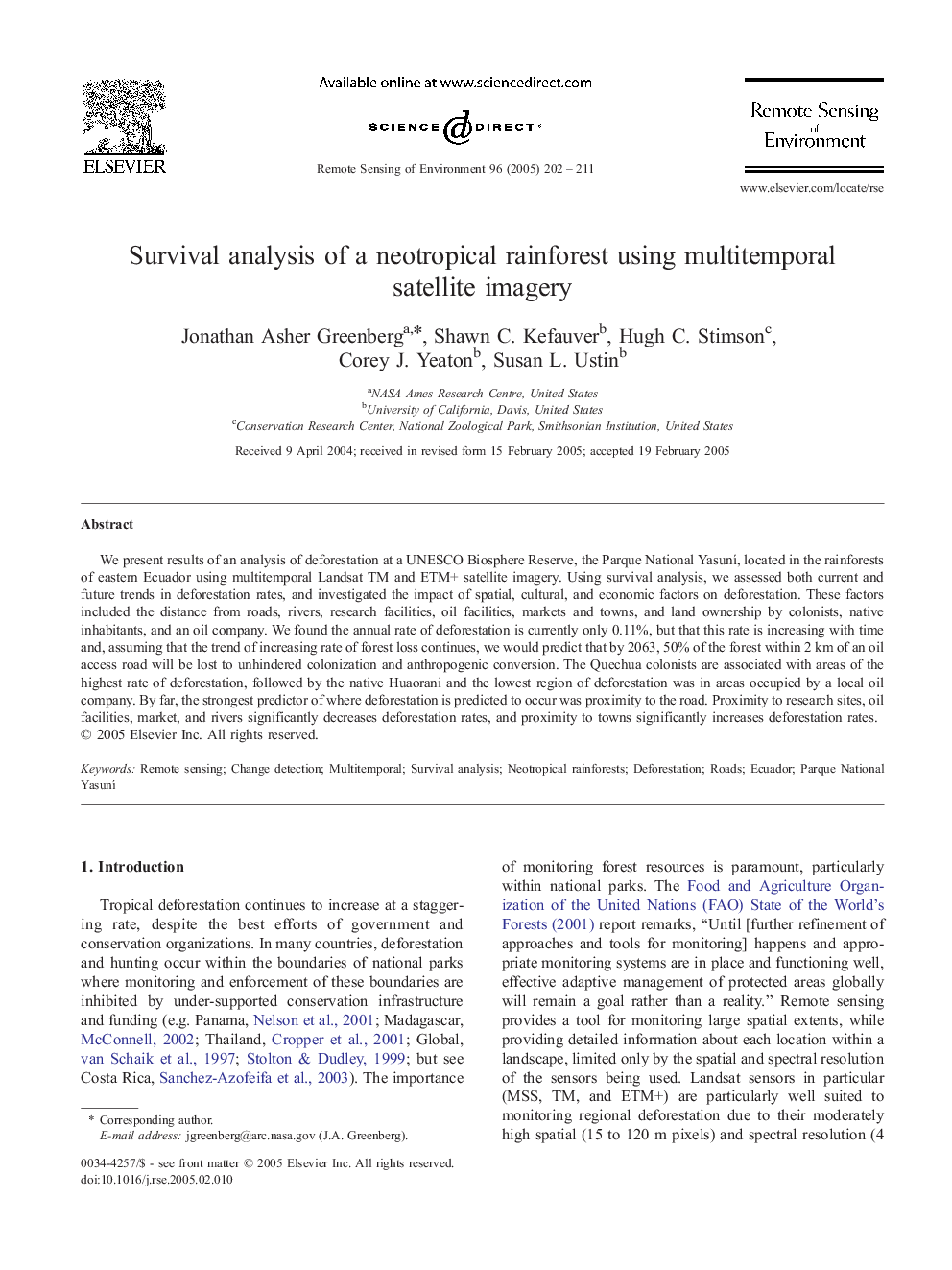| Article ID | Journal | Published Year | Pages | File Type |
|---|---|---|---|---|
| 10114224 | Remote Sensing of Environment | 2005 | 10 Pages |
Abstract
We present results of an analysis of deforestation at a UNESCO Biosphere Reserve, the Parque National YasunÃ, located in the rainforests of eastern Ecuador using multitemporal Landsat TM and ETM+ satellite imagery. Using survival analysis, we assessed both current and future trends in deforestation rates, and investigated the impact of spatial, cultural, and economic factors on deforestation. These factors included the distance from roads, rivers, research facilities, oil facilities, markets and towns, and land ownership by colonists, native inhabitants, and an oil company. We found the annual rate of deforestation is currently only 0.11%, but that this rate is increasing with time and, assuming that the trend of increasing rate of forest loss continues, we would predict that by 2063, 50% of the forest within 2 km of an oil access road will be lost to unhindered colonization and anthropogenic conversion. The Quechua colonists are associated with areas of the highest rate of deforestation, followed by the native Huaorani and the lowest region of deforestation was in areas occupied by a local oil company. By far, the strongest predictor of where deforestation is predicted to occur was proximity to the road. Proximity to research sites, oil facilities, market, and rivers significantly decreases deforestation rates, and proximity to towns significantly increases deforestation rates.
Related Topics
Physical Sciences and Engineering
Earth and Planetary Sciences
Computers in Earth Sciences
Authors
Jonathan Asher Greenberg, Shawn C. Kefauver, Hugh C. Stimson, Corey J. Yeaton, Susan L. Ustin,
